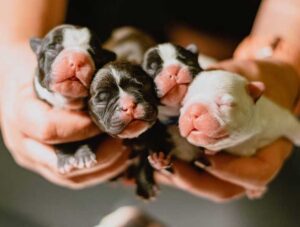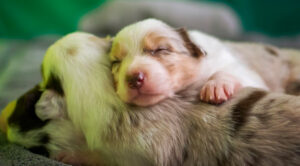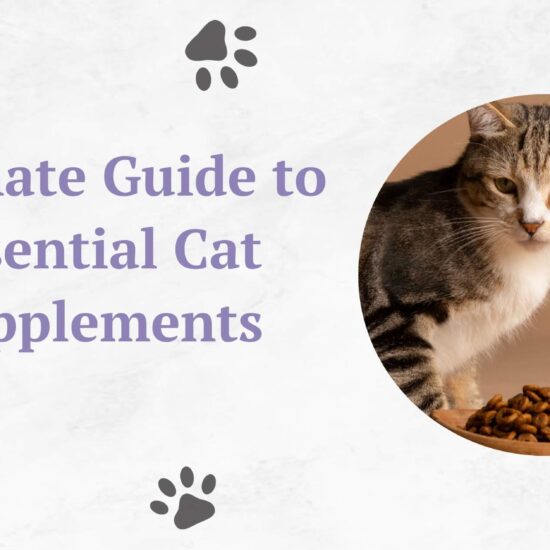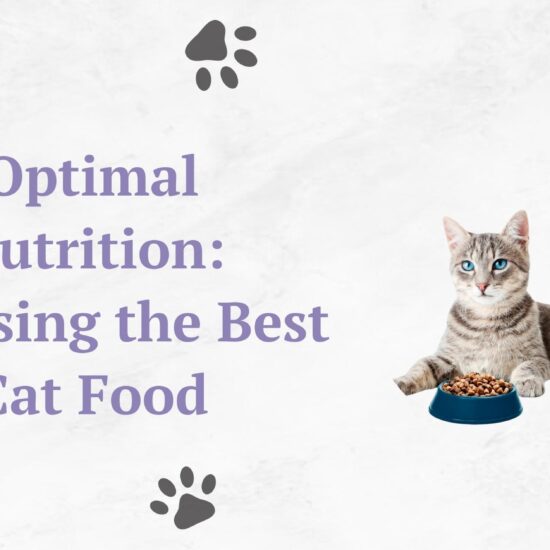Humans have bred pets for ages. Selected matings of animals produce offspring with certain features or qualities. Pet breeding can create new breeds, but it also requires a lot of responsibility.
Introduction
To protect parent animals and their children, responsible breeding is necessary. This thorough essay will cover pet breeding’s history, methods, types, and responsibilities.
The History of Pet Breeding

Pet breeding has thousands of years of history. It has expanded from practical to aesthetic and companionship, resulting in many breeds of dogs, cats, and other pets. This section discusses pet breeding’s history, from its origins to kennel clubs’ influence on the industry.
Ancient Origins
Animal breeding for attributes dates back to ancient cultures. Ancient Egypt, where cats were bred, had the first selective breeding records. These cats were renowned for their enigmatic personalities and were specifically bred for unique coat patterns and hues. In mythology, the ancient Egyptians depicted cats as having extraordinary abilities.
Various ancient Chinese dynasties developed dog breeds, including the Pekingese and Shih Tzu. These canines were bred solely for friendship and noble status. Their appearance, temperament, and lap dog compatibility were carefully chosen. The historical documents and artistic portrayals of these ancient pets reveal early humans’ fascination with rearing animals for aesthetic and companionship reasons.
European Breed Development
Pet breeding changed dramatically in Europe during the Middle Ages. The European aristocracy and nobility became interested in breeding dogs and other pets. The Middle Ages saw a change from utilitarian hunting and herding to breeding animals for their beauty and unique traits.
During this time, beloved breeds emerged. This is when the Cocker Spaniel, with its joyful nature and prominent ears, and the Beagle, with its scenting talents, were born. The Dachshund, known for its long body and bravery, was also developed in Germany.
These breeds were developed to provide utilitarian pets that provide companionship and entertainment to their owners. This shift in focus led to the present view of pets as family members rather than tools.
Role of Kennel Club
Kennel clubs changed pet breeding in the 19th century. These organizations helped shape modern pet breeding standards. The UK Kennel Club and the US AKC are notable examples. Kennel clubs were created to standardize breeds and maintain accurate pedigrees. They established strict breed recognition criteria and ensured breed consistency over generations. These clubs also regulated dog shows and competitions where breeders could demonstrate their pups’ breed standards.
Kennel clubs helped establish breed standards. These guidelines defined each breed’s size, coat color, temperament, and conformation. By following these requirements, breeders could create dogs that satisfied club standards.
Breeders could also trace their dogs’ ancestry through kennel groups’ pedigree registration. This maintained breed line integrity and monitored genetic variety and health within breeds.
Top 5 Pet Breeding Methods

Pet breeding has many ways, each with its own goals, obstacles, and considerations. Breeders must grasp these strategies to make judgments that benefit their animals. This section will discuss these methods and highlight their importance in pet breeding.
- Inbreeding
Breeding closely related animals like siblings, parents, and offspring is called inbreeding. Inbreeding can increase beneficial qualities but also increase the danger of genetic abnormalities and health issues. Responsible breeders use inbreeding sparingly and carefully consider animal health and welfare.
Inbreeding can enhance breed qualities, which is a major benefit. Through controlled inbreeding, breeders can improve coat color and size consistency. This strategy demands a thorough understanding of the breed’s genetics and a dedication to health risk management.
Pet Breeders who employ inbreeding responsibly prioritize genetic testing and analysis. Ensure potential mates are free of hereditary illnesses and genetic abnormalities by screening breeding animals. They also check the offspring’s health and address any issues immediately.
- Linebreeding
Inbreeding and linebreeding are similar but less extreme. It involves mating animals with a shared ancestor. This strategy is used to maintain bloodlines and reduce breed genetic problems.
The main purpose of line breeding is to preserve desirable features while minimizing hazards. Responsible breeders carefully check potential mates’ genetics to ensure they share the same lineage without overbreeding. Breeders can improve their breed while reducing hereditary health risks by preserving features and genetic variation.
- Outcrossing
Outcrossing pairs animals from different bloodlines of the same breed. Outcrossing aims to increase genetic variety in breeding programs. This diversity protects a breed from inherited diseases and genetic disorders and promotes health and vitality.
Long-term breed health requires outcrossing. It lets breeders add new genetic material to their lineages, minimizing harmful genes. This strategy often improves genetic fitness, minimizing inherited problems in a breed.
Responsible breeders know that outcrossing protects animal health and genetic diversity. They carefully choose mates with complementing features, evaluating the benefits of new genetics while meeting breed requirements and compatibility.
- Crossbreed
Crossbreeding involves breeding animals from various breeds or species to create hybrids. Crossbreeding can produce unique and healthier pets, but it requires careful consideration of parent breed compatibility and offspring qualities.
The main benefit of crossbreeding is hybrid vigor, or heterosis. This occurs when the offspring of two genetically diverse breeds are healthier, more vital, and more resilient than purebreds. Crossbreeding may generate animals with a wider genetic pool and lower the risk of breed-specific diseases.
Crossbreeders who are responsible conduct research and evaluate breed compatibility. They consider the parent breeds’ temperaments, health histories, and physical attributes. They also care for the hybrids.
- Selective Breeding
Breeders use selective animal breeding to select parents with desirable traits and mate them to generate offspring with those traits. This strategy is used to generate and refine purebred lines, giving breeds their unique traits.
Selectively breeding animals requires careful evaluation and selection. Responsible breeders carefully evaluate their parents’ health, temperament, and appearance. Breeding decisions encompass coat color, size, conformation, and demeanor.
Selective pet breeding lets breeders improve breed qualities while preserving standards. Through constant improvement, each generation builds on the strengths of the previous one. This strategy is useful for breed consistency and producing animals that meet criteria.
Note: There might be affiliate links mentioned here. We may receive a commission if you purchase a product through an affiliate link. There is no additional charge for you. Please do your own research before making any online purchases.
15 Essential Responsibilities of Pet Breeding

Responsible pet breeding is a multidimensional process that goes beyond reproduction. It includes ethical, health, and legal duties that favor animal care and breed health. This section will describe these obligations and their importance to animal welfare and breed purity.
- Moral Issues
Responsible pet breeding is based on ethics. Ethical breeders avoid overbreeding, inbreeding, and puppy factories to preserve their breeds’ essence and distinctiveness.
- Breed Standards Preservation
Responsible breeders are steadfast in following breed criteria. The breed’s qualities, characteristics, and physical aspects are defined by these guidelines. Breed standards ensure that each generation of animals retains the breed’s appearance and disposition. Deviation from these rules risks diminishing the breed’s individuality and losing its prized features.
Responsible breeders try to preserve their breed’s unique traits, such as a Siamese cat’s sleek coat or a Dalmatian dog’s characteristic coat pattern. This commitment keeps breeds popular in the global pet community.
- Avoiding Overbreeding
Overbreeding is a major pet breeding issue. It arises when breeders produce too many litters without considering demand or care. A surplus of pets from overbreeding may end up in shelters or in bad living situations.
Responsible breeders breed animals moderately. They carefully evaluate demand for pups or kittens of their breed and potential homes’ ability to provide loving care. They reduce overpopulation and improve animal welfare by restricting litters.
- No Inbreeding
Mutating closely related animals increases the likelihood of genetic diseases and health issues within a breed. Responsible pet breeders carefully manage inbreeding to prevent danger. Genetic testing and pedigree analysis guarantee that breeding partners are not too connected.
Responsible breeders prevent over-inbreeding to improve animal health. Genetic diversity protects the breed from inherited diseases and ailments, ensuring its long-term health.
- No Puppy Mills
Commercial puppy mills are known for putting profit before animals. They often have poor living circumstances, overpopulation, and poor veterinary treatment. Responsible breeders condemn puppy mills and refuse to support them.
Ethical breeders prioritize animal welfare. They put their animals’ health and happiness first, offering a loving, safe, and clean environment. This striking difference between ethical breeders and puppy factories emphasizes the necessity of responsible breeding for animal welfare.
- Health Concerns
Responsible breeding is based on health. Health-conscious breeders evaluate puppies and kittens, feed them well, and socialize them early.
- Genetic Testing
Responsible breeders know genetic testing helps discover and reduce hereditary diseases and problems in their breeding programs. They thoroughly genetically screen parent animals before breeding to determine if they will pass on specific genetic diseases. This preventative approach reduces next-generation health issues.
Genetic testing allows breeders to match animals that are genetically compatible and unlikely to generate sick offspring. This commitment to careful breeding improves animal and breed health.
- Health Screening
Responsible breeding requires regular health checks and examinations. Breeders regularly examine their breeding animals to ensure they are healthy and disease-free. These exams include physicals, vaccines, and dental treatment.
Keeping breeding animals healthy is ethical and necessary for healthy offspring. Responsible breeders give their animals top-notch veterinary treatment to ensure they are physically healthy for pregnancy and parenthood.
- Proper Care and Nutrition
Proper feeding and care are essential for reproducing animals. Ethical breeders provide high-quality, animal-specific nutrition. To support mother and child health, this dietary focus begins before conception, continues during pregnancy, and continues postnatally.
Breeders also prioritize animal care, including exercise, grooming, and mental stimulation. These methods promote animals’ physical and mental well, creating a loving environment.
- Early Socialization
Responsible breeding requires early socialization, especially for puppies and kittens. Breeders understand the value of exposing newborn animals to a diversity of experiences, people, and surroundings in their early weeks and months.
Socialized puppies and kittens are more likely to be well-adjusted, confident, and friendly. Responsible breeders expose their litters to new surfaces, noises, and social interactions to help them become comfortable and adaptable companions.
- Law Considerations
Legal compliance and responsible sales are essential to ethical pet breeding. Breeders must comply with complex standards, produce accurate documentation, and be transparent to purchasers.
- Documentation and Registration
Responsible pet breeders meticulously register and document their animals. All their animals are registered with relevant kennel associations for correct lineage and pedigree information. This registration helps preserve breed lines and assures potential owners of the animals’ validity.
Comprehensive documentation goes beyond pedigrees. Health records include immunization schedules, medical histories, and breeding histories. Breeders and new owners use these records for proper care and health monitoring.
- Animal Welfare Law Compliance
Responsible breeders must follow local, national, and international animal welfare legislation. Breeders must always follow these animal welfare laws.
Responsible breeders prioritize animal care and ethical treatment over legal obligations. They provide clean and roomy living quarters, plenty of exercise and mental stimulation, and veterinary treatment to keep their animals healthy.
- Sales Ethics
Ethical breeders choose their animals’ new homes carefully. They meticulously screen customers for appropriateness and dedication to loving and caring for their pets. Responsible breeders put animals’ long-term health before sales.
Ethical breeders also advise consumers in detail about pet ownership responsibilities. This includes spaying/neutering, vaccinations, nourishment, grooming, and care. Responsible breeders teach new owners how to meet their pet’s requirements.
- Responsible Breeding Records
Responsible breeding requires precise and complete breeding records. Each animal’s health, pedigree, and breeding history are scrupulously documented by breeders. Tracking the health and genetic history of mating animals and their offspring requires this information.
Animal breeding records also promote breeding openness and accountability. They provide a verifiable history of each animal, helping breeders choose breeding partners and buyers learn about their new pets.
4 Biggest Pet Breeding Controversies

Responsible breeding is essential for pet health, but the pet breeding industry has proven controversial. Debates over several difficult subjects have highlighted the necessity for continual scrutiny and ethical considerations.
- Overpopulation and Shelter Animals
Pet overpopulation is a major issue with pet breeding. Millions of shelter animals are euthanized each year owing to a lack of adopters. Critics say breeders help the problem by creating more pets when there are already innumerable animals in need of loving homes.
When shelter animals are suffering, overpopulation raises ethical considerations about adding pets. Critics say responsible breeders should be more selective, especially with shelter-available breeds. Breeders can reduce animal shelter workloads by appropriately managing breeding and prioritizing breed preservation over proliferation.
- Genetic Health Issues
Selective breeding, while necessary for purebred animal development, can worsen genetic abnormalities and health issues in some breeds. Hip dysplasia in giant dogs and brachycephalic conditions in flat-faced breeds are predisposed to certain health complications. Even when breed standards promote physical qualities with health risks, these health complications can occur.
Responsible breeders actively address these challenges. Their breeding methods include genetic testing to identify carriers of hereditary disorders and avoid mating partners that could generate sick progeny. These breeders promote the long-term health and wellbeing of their animals while retaining their breeds’ unique traits.
- Unethical Breeders
Unethical puppy factories and backyard breeders are a major concern in the pet breeding industry. These breeders put profit before animal welfare, resulting in poor living circumstances, health difficulties, and socialization.
Puppy mills are renowned for mass-producing puppies in poor conditions without consideration for the breeding animals’ health. These facilities have overpopulation, poor veterinary care, and little human connection. Critics say puppy factories harm the reputation of honest breeders.
Stricter regulations and enforcement, adoption from shelters and rescue organizations, and educating potential pet owners about avoiding pet stores and online sellers that source animals from puppy mills are ways to combat their unethical breeding practices.
- Rare Breed Preservation
Positively, judicious breeding can save rare breeds. Declining populations and disinterest put several breeds at risk of extinction. Responsible breeders help preserve these breeds and pass on their genetic legacy. Responsible breeders preserve rare breeds’ genetic variety through careful breeding and breed criteria. Without their dedication, some breeds may vanish, erasing their cultural and genetic history.
FAQs
Why is pet breeding important?
Selectively mating animals to generate offspring with certain qualities is pet breeding. Creating and conserving distinctive pet breeds is vital, but ethical breeding procedures protect animals.
What is the history of pet breeding?
Pet breeding is thousands of years old. Ancient Egypt and China selectively bred for aesthetics and companionship.
How did European nobles influence pet breeds?
European nobles in the Middle Ages helped create pet breeds. The Cocker Spaniel, Beagle, and Dachshund were bred for their particular traits and companionship during this time.
How did kennel clubs affect pet breeding?
The Kennel Club in the UK and the American Kennel Club in the US defined breed standards, kept pedigree data, and shaped modern pet breeding.
What are the purposes of pet breeding methods?
Inbreeding, linebreeding, outcrossing, crossbreeding, and selective breeding are pet breeding strategies. Each strategy enhances desired features or adds genetic variety.
What are the risks of pet breeding inbreeding?
Inbreeding can enhance good features but also increase the risk of genetic diseases and health issues.
How can outcrossing improve breed health?
Outcrossing increases genetic variety in a breeding program, minimizing the danger of hereditary diseases and genetic disorders.
Why is hybrid vigor important in crossbreeding?
Heterosis, or hybrid vigor, happens when children from genetically different breeds are healthier and more vital. Crossbreeding benefits from its ability to minimize hereditary illnesses and increase genetic fitness.
What ethical issues arise in appropriate pet breeding?
Maintaining breed standards, limiting overbreeding and inbreeding, and opposing puppy mills are ethical issues.
How do ethical breeders preserve rare and endangered breeds?
Responsible breeders preserve uncommon breeds through maintaining genetic diversity, following breed standards, and preserving these distinct genetic heritages.
Conclusion
Pet breeding is complicated, having a long history and many ways. Responsible breeding can help preserve some breeds, but ethical issues must be addressed and animal welfare must be prioritized.
Responsible breeders observe strong ethical norms, assess breeds for health, and promote their long-term care. Potential pet owners should also be aware of their obligations and consider adopting from shelters or rescue groups to decrease pet overpopulation.
In the end, careful breeding and informed pet ownership are necessary for happy, healthy, and fulfilled lives as treasured family members.












